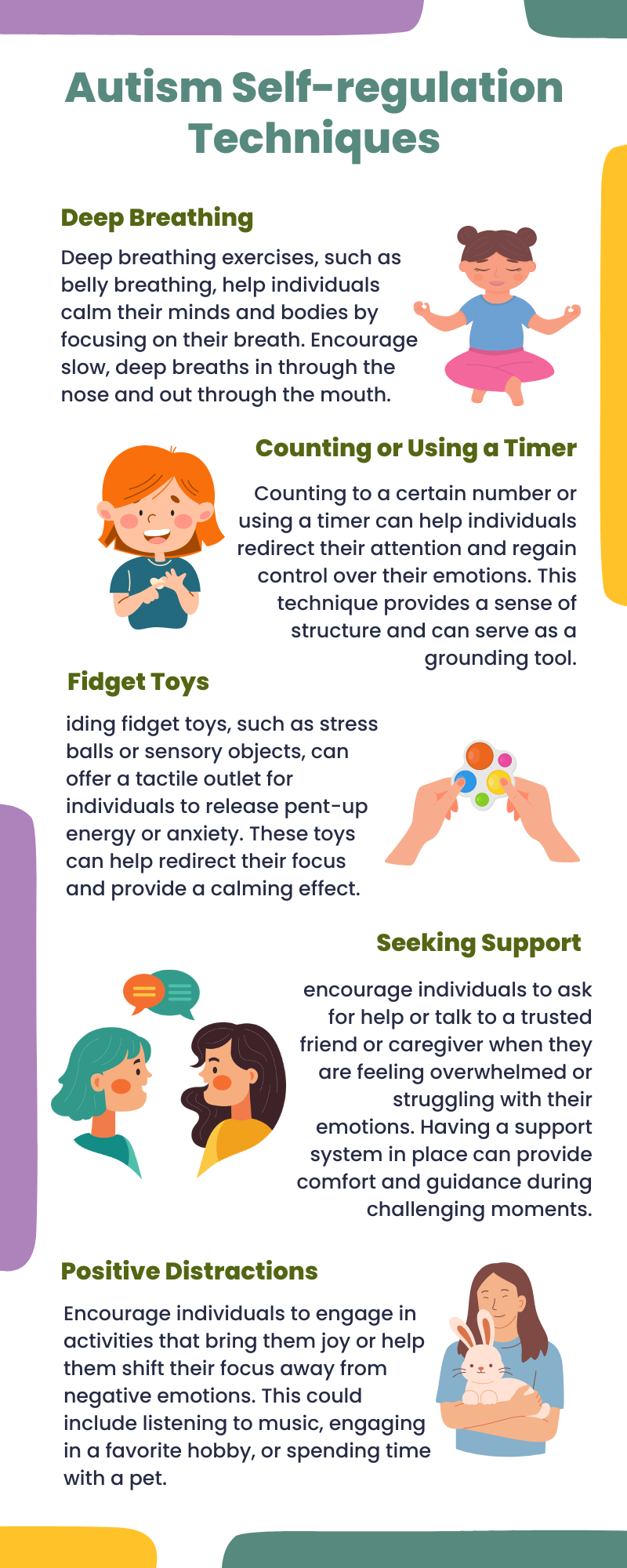Emotional regulation, defined as a person’s ability to effectively manage and respond to an emotional experience, plays a crucial role in our daily lives. For individuals with autism, emotional regulation can present unique challenges. In this article, we will explore the importance of emotional regulation and the specific challenges faced by individuals with autism.

Importance of Emotional Regulation
Emotional regulation is a fundamental skill that enables individuals to navigate and adapt to various emotional states. It allows them to recognize, understand, and appropriately respond to their emotions. Effective emotional regulation promotes mental well-being, enhances social interactions, and supports overall emotional stability.
For individuals with autism, emotional regulation is particularly significant. Autism is a complex neurodevelopmental disorder that affects social communication and behavior. Autistic individuals often experience difficulties in processing sensory information and managing anxiety in social situations. These challenges can make emotional regulation more demanding.
Teaching emotional self-regulation to individuals with autism is essential. It empowers them to develop coping mechanisms, regulate their emotions, and enhance their overall quality of life. By equipping individuals with autism with effective self-regulation techniques, we can help them navigate their emotions and improve their social interactions.
Challenges for Individuals with Autism
Individuals with autism face unique challenges when it comes to emotional regulation. Sensory overload, difficulty understanding and interpreting emotions, and struggles with social communication can make it harder for them to regulate their emotional responses.
Sensory overload refers to an overwhelming experience of sensory information, such as sounds, lights, or textures. For individuals with autism, sensory overload can trigger emotional distress and make it more challenging to regulate their emotions effectively.
Additionally, understanding and interpreting emotions can be more difficult for individuals with autism. They may have trouble recognizing facial expressions, body language, or subtle social cues, which are crucial for understanding and responding appropriately in social situations. This difficulty can lead to frustration, anxiety, and challenges in emotional regulation.
Given these challenges, it is important to implement strategies and techniques that cater to the specific needs of individuals with autism. By providing them with the necessary support and tools, we can help them navigate their emotions and develop effective self-regulation skills.

Techniques for Emotional Self-Regulation
There are several techniques to help individuals with autism develop self-regulation skills. These techniques aim to empower individuals to manage and regulate their emotions effectively. In this section, we will explore three techniques: deep breathing exercises, establishing zones of regulation, and modeling calm behavior.
Deep Breathing Exercises
Deep breathing exercises are a valuable tool for promoting emotional regulation in both neurotypical individuals and those with autism. This technique involves taking slow, deep breaths in through the nose and exhaling gently through the mouth. Deep breathing can help individuals calm their nervous system, reduce anxiety, and manage overwhelming emotions.
When teaching deep breathing exercises to individuals with autism, it’s important to use visual prompts and cues to facilitate understanding. For example, you can demonstrate deep breathing by using visual aids such as blowing bubbles or inflating a balloon. Encourage the individual to practice deep breathing whenever they feel overwhelmed or need to regulate their emotions.
Establishing Zones of Regulation
Establishing zones of regulation can be a helpful strategy for individuals with autism to recognize and communicate their emotional state. This technique involves creating a system that categorizes emotions into different zones, helping individuals identify when they may need more regulation.
There are various ways to establish zones of regulation, such as using a color-coded system, an emotional levels chart, or a numerical system. For example, you can assign different colors to represent different emotional states, such as calm (blue), alert (green), heightened (yellow), and overwhelmed (red). By using visual cues and prompts, individuals can easily identify their current emotional zone and apply appropriate self-regulation techniques.

Modeling Calm Behavior
Modeling calm behavior is an effective technique for teaching individuals with autism how to regulate their emotions. Parents and caregivers play a crucial role in demonstrating calm and appropriate ways to handle emotions. By modeling calm behavior and communication, they can provide a positive example for the individual to observe and learn from.
When modeling calm behavior, it’s important to emphasize the use of appropriate coping strategies. This can include techniques such as taking deep breaths, counting to ten, using positive self-talk, or engaging in a calming activity like drawing or listening to music. By consistently modeling these behaviors, individuals with autism can learn effective strategies for self-regulation.
Creating a Calming Environment
Let’s explore two key aspects of creating such an environment: establishing a special calming place and providing opportunities for practicing emotion regulation skills.
Special Calming Place
For individuals with autism, having a designated special calming place can be highly beneficial. This place serves as a safe and secure space where they can retreat to when feeling overwhelmed or in need of self-regulation. It can be a specific room, corner, or even a designated area within a larger space.
The special calming place should be designed to minimize sensory overload and promote relaxation. Consider incorporating elements such as soft lighting, comfortable seating or cushions, calming colors, and sensory tools like fidget toys. Personalize the space based on the individual’s preferences and sensory needs. This dedicated area provides a sense of familiarity and control, enabling individuals to manage their emotions more effectively.
It’s worth noting that while a special calming place can be established at home, it may not always be feasible in public settings. In such cases, it’s important to identify alternative strategies for self-regulation, such as deep breathing exercises or using sensory tools discreetly.
Practice of Emotion Regulation Skills
Teaching emotional self-regulation is a crucial step in empowering individuals with autism. This involves providing opportunities for individuals to learn and practice effective strategies for managing their emotions. Several techniques can be employed to facilitate this process.
One effective approach is to create an emotional levels chart, which categorizes emotions into different levels. Each level corresponds to a specific emotional state, ranging from calm to highly agitated. By assigning emotional levels to various situations, individuals can better understand and identify their emotions in different contexts.
Coping Mechanisms and Strategies
Coping mechanisms and strategies play a vital role in helping individuals with autism self-regulate their emotions. These techniques provide individuals with the tools they need to manage and cope with challenging situations. Here are some common coping mechanisms and strategies:

When implementing coping mechanisms and strategies, it’s important to assess the effectiveness of the intervention over time. Measure the frequency of correct responses and reinforce positive behaviors with praise or other tangible rewards. This positive reinforcement can further motivate individuals to continue practicing and utilizing their coping skills.
Conclusion
Fostering self-regulation in individuals with autism is a multifaceted endeavor that requires patience, understanding, and a tailored approach. By implementing a variety of techniques such as sensory accommodations, structured routines, mindfulness practices, and social stories, individuals with autism can develop invaluable skills to navigate their environments more effectively and lead fulfilling lives. It’s important to recognize that self-regulation is a dynamic process, and what works for one person may not work for another. Therefore, ongoing assessment, flexibility, and collaboration with professionals, caregivers, and the individual themselves are essential in promoting successful self-regulation strategies. With dedication and support, individuals with autism can continue to build upon their strengths and overcome challenges, ultimately empowering them to thrive in all aspects of life.
If you’re seeking specialized ABA therapy in New Jersey, Indiana, Georgia, and New York, Golden Care offers comprehensive services tailored to meet the unique needs of each individual. Contact us to learn more or book a consultation today.
Sources:
https://www.autismparentingmagazine.com/help-child-with-emotional-regulation/
https://onlinegrad.pepperdine.edu/blog/emotional-self-regulation-children-autism/


